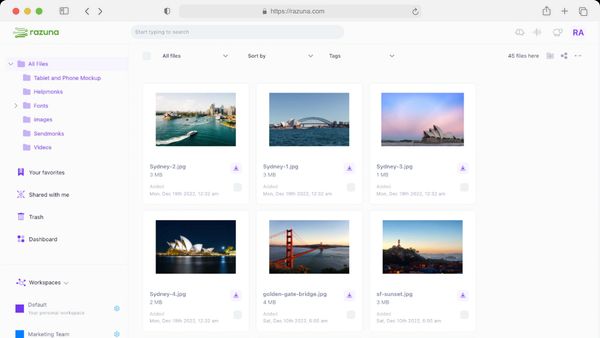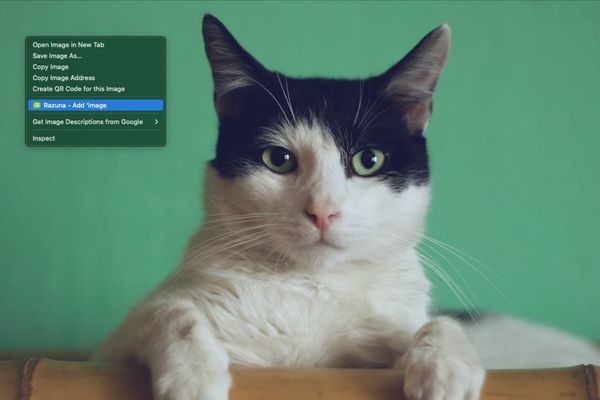
Announcing Collect+: Save and share everything
COLLECT+ is a productivity tool that helps you save and share everything you find on the web. It is built into the Razuna digital asset management platform.
Read nowDrowning in a sea of digital files? You're not alone. In this age of content creation, organizations get overwhelmed by the sheer volume of media files they must manage. The solution? Using an effective media asset management system.
With projected growth from USD 1.53 billion in 2022 to USD 3.81 billion by 2029, the MAM market reflects the increasing demand for streamlined media handling. If you are lost in the chaos of digital files, it's time to explore how MAM software can turn the tide.
In this article, we'll explore all things MAM, including its benefits, use cases, and how to choose the right MAM system for your organization.
Media asset management, or MAM, is a system that helps you organize, store, and retrieve your digital media files. You can use MAM software to manage content like videos, images, and audio files in one centralized location.
With MAM, you can:
If you have a large volume of digital media, MAM will provide a streamlined approach to what could otherwise be an overwhelming task.
Media asset management and Digital Asset Management (DAM) are two systems that help you to manage your digital content. While they share similarities, understanding their differences is crucial when choosing the right solution for your needs.
MAM software focuses on organizing and retrieving media files such as videos, images, and audio. If you're in the media industry or deal primarily with multimedia content, MAM offers specialized tools to manage these files. It includes features like transcoding, previewing, and annotating media files, allowing you to handle complex media workflows.
DAM is a broader system that manages all types of digital assets. These include documents, spreadsheets, PDFs, along with media files.
If your organization needs a comprehensive solution to manage various types of digital files, DAM might be the better choice for you. It offers a centralized repository for all digital assets, ensuring consistency and control across different departments.
Struggling to manage a growing collection of digital media files? A media asset management system can help you manage and organize your collection. But you'll also enjoy more benefits, including:
One of the biggest benefits of using MAM software is how it allows seamless collaboration for cohesive workflows.
With a MAM solution, your team can effortlessly share, edit, and comment on media files, all in real time. MAM breaks down the barriers that hinder collaboration, allowing different departments or even global teams to collaborate on media projects.
MAM tools will keep your assets safe and secure by guarding against theft, loss, and unauthorized access.
These tools use strong passwords and encryption to keep data safe in both the sharing and storing phases. They offer controlled access through permissions, allowing only authorized users to view and edit files.
With MAM software, you'll never lose a file again, as it offers an easy way to back up your files and recover any lost data.
MAM software saves time by organizing and indexing your digital media files.
With a streamlined search and retrieval process, you can locate the files you need without sifting through disorganized folders. This efficiency allows you to dedicate more time to important tasks and projects, enhancing overall productivity.
MAM directly impacts your bottom line by saving your organization money.
By centralizing and organizing your media assets, a MAM system eliminates the need for additional storage solutions and minimizes the risk of losing or duplicating files.
The efficiency MAM brings to your workflow means less time spent searching and managing files, translating to cost savings in labor. Also, streamlined collaboration and accessibility reduce the need for redundant tools or platforms.
Media asset management systems are versatile, catering to various use cases that align with your organization's needs. These include:
Marketing and advertising: To centralize all marketing materials, allowing for consistent branding and efficient campaign execution.
Content creation: To manage and organize a vast library of media files, ensuring quick retrieval for future projects.
Broadcasting: To streamline the handling of video and audio files for smooth broadcasting workflows.
Remote collaboration: Enables global teams to work on shared media projects without geographical constraints.
Educational institutions: To organize educational content and make it easily accessible for students and faculty.
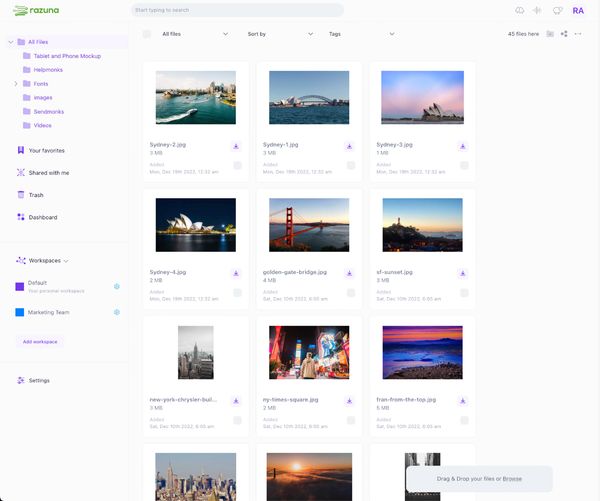
You've seen how a media management system can improve efficiency and save money for your company. Now it's time to choose your ideal MAM software. There are many MAM tools on the market, so here are the features to look out for:
You need a solution that seamlessly connects with your existing software and tools, ensuring a smooth workflow. Whether it's integrating with your content management system or being compatible with various file formats, the right MAM software should enhance your processes.
Look for a system that supports your current technology stack. This will allow for a cohesive and efficient media management experience.
These features allow you to define who can view, edit, or share specific media files within your organization. This ensures that only authorized users can access sensitive or important assets.
When you set clear permissions, you have control over your media library. You also safeguard content and enhance collaboration without compromising security.
Your MAM system should streamline workflows and improve efficiency. Look for a system that allows you to categorize and tag your media files with relevant information, making them easily searchable and accessible.
A well-structured MAM system empowers you to organize assets by various criteria, such as project, content type, or date. It should also feature metadata tagging, allowing you to quickly locate the file you need, turning a time-consuming search into an efficient, streamlined process.
A media asset management system with a simple user interface is essential for your daily operations.
You need an intuitive and easy-to-navigate platform so your team can access and manage media files with ease. Choosing a user-friendly MAM system will minimize the time your organization spends on training and adaptation.
Managing media assets efficiently is no longer a luxury but a necessity. Media asset management systems provide seamless collaboration, time savings, cost efficiency, and adaptability to various use cases. Whether you're a content creator, marketer, or in a specialized industry, the right MAM system will transform your workflows.
Ready to take control of your media assets and elevate your organization's efficiency? Try Razuna, a brand asset management solution tailored to your needs. With integration, compatibility, and a user-friendly interface, Razuna is the solution you need to succeed in today's digital world.
Register now for free!

COLLECT+ is a productivity tool that helps you save and share everything you find on the web. It is built into the Razuna digital asset management platform.
Read now
These 18 tips for efficient photo organization are the best strategies for every marketer. Learn how to keep your digital images organized and accessible.
Read now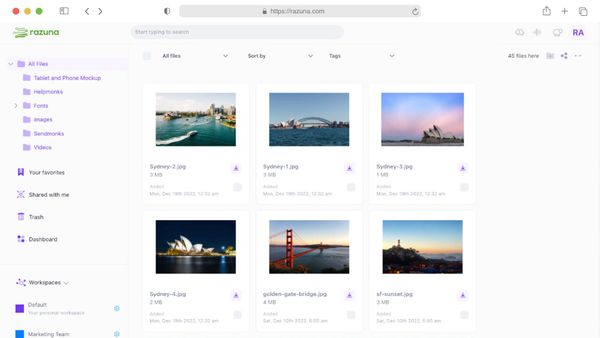
A digital asset library software organizes all digital assets in one place. But which one is the best? Here are the top 8 asset library software choices.
Read now
The latest update to our Digital Asset Management system, is focused on giving more power and flexibility to control user permissions, file, and folder access.
Read now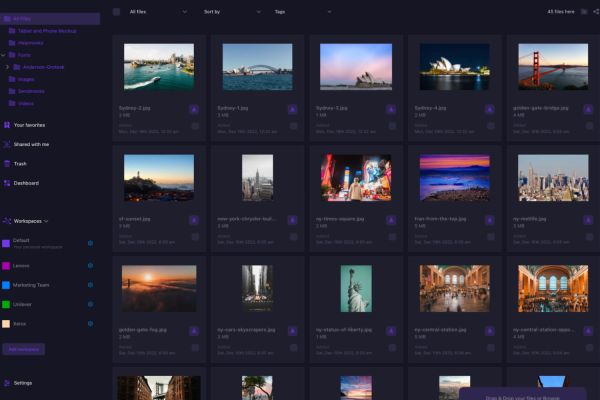
(each free accounts comes with 500 GB space)
